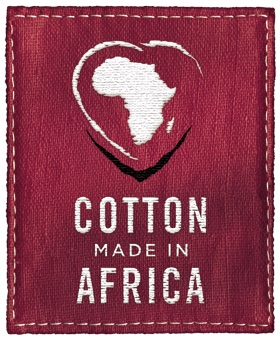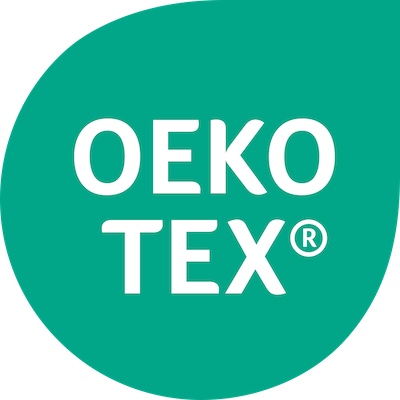The fashion industry, notorious for its significant pollution, contributes approximately 10% of global carbon emissions and 20% of wastewater. Additionally, old clothes go into landfills, further adding to the environmental burden. Sustainable fabrics are key to reducing these impacts.
When choosing clothes, making informed choices is more important than ever. This guide aims to help you identify sustainable fabrics, empowering you to make eco-friendly choices that benefit both you and the planet.
Understanding Sustainable Fabrics
What Are Sustainable Fabrics?
Sustainable fabrics are materials that are produced in ways that minimise their impact on the environment and promote ethical practices. Throughout their lifecycle — from growth or production, to use, and disposal — these fabrics are crafted to mitigate environmental harm. They address key issues caused by the fashion industry, such as excessive water use, chemical pollution, and poor labour practices, aiming to resolve both environmental and social challenges.
What makes a fabric sustainable?
There are a few key factors that make a clothing material sustainable:
- Reduced Carbon Footprint
Sustainable fabrics are typically sourced from renewable materials, recycled or upcycled fibres. They produce lower carbon emissions compared to traditional textiles.
- Less Water Usage
Sustainable clothing materials use less water in production, conserving freshwater resources and reducing textile manufacturing’s environmental impact.
- Reduced Chemical Use
Sustainable fabrics prioritise natural and non-toxic dyes and finishes. This approach minimises chemical pollution in waterways and reduces exposure to harmful substances for workers and consumers.
- Ethical Labour Practices
Sustainable clothing materials ensure fair pay and safe working conditions for everyone involved, from farms to factory workers, promoting social responsibility alongside environmental stewardship.
- Durability
Sustainable fabrics are crafted from durable, high-quality materials, designed to last longer and minimise the need for replacements. This approach effectively reduces waste and lowers environmental impact.
- Biodegradability
Unlike synthetic fibres that contribute to microplastic pollution, many sustainable fabrics are biodegradable. They naturally break down at the end of their lifecycle, reducing landfill waste.
Common Sustainable Fabrics and Their Benefits

1. Organic Cotton
Organic cotton is grown without synthetic pesticides, artificial fertilisers, or other toxic chemicals. It uses significantly less water (90% less) and energy compared to conventional cotton. Organic cotton is also safer for farmers and promotes a healthier ecosystem.
2. Linen
Linen is a natural fabric made from the flax plant. It captures carbon and requires minimal water, fertiliser, or pesticides. Highly durable and breathable, linen is also biodegradable, providing long-lasting wear and comfort, making it a great sustainable fabric.
3. Hemp
Hemp is nearly identical to linen in its sustainability. It’s a versatile, natural fibre derived from the hemp plant. Hemp grows even more quickly than linen, requires little water and no pesticides, making it highly sustainable. It is also durable, biodegradable, and naturally resistant to mold and UV light.
4. Bamboo
Bamboo is a fast-growing plant often used to create sustainable fabrics. It requires minimal water and no pesticides, making it an eco-friendly option. However, the process of turning bamboo into fabric can involve harsh chemicals, leading to seriously harmful environmental damage. Look for certified organic bamboo labels to ensure it’s sourced from sustainably managed forests and manufactures.
5. TENCEL™ Lyocell
Lyocell, a rising star semi-synthetic sustainable fabric, is made from wood pulp typically sourced from eucalyptus trees. Known for its softness, breathability, and efficient moisture absorption, it offers exceptional comfort. Though its production involves chemicals, they are managed in a closed-loop system, minimising environmental impact. Produced by Austrian manufacturer Lenzing, TENCEL™ Lyocell stands out as the most sustainable option.
6. Modal
Modal, a semi-synthetic eco-friendly fabric, is made from beech tree pulp and is known for its silky feel, breathability, and high absorbency. It is more environmentally friendly than many conventional fabrics due to its sustainable sourcing. However, the chemical process involved can have environmental impacts if not managed properly. TENCEL™ Modal is produced from sustainably farmed trees, using a more energy-efficient and less toxic chemical process.
7. Wool
Wool has the potential to be a sustainable fabric when sourced from farms with ethical practices and processed using eco-friendly methods. It’s a natural protein fibre obtained from the fleece of sheep, goats, and similar animals. Wool is warm, durable, biodegradable, and typically requires less water and energy to produce than cotton.
8. Recycled Fabrics
Recycled fabric is a sustainable option made from repurposed materials like plastic bottles or old garments, which reduces waste and conserves valuable resources. It helps decrease the demand for virgin materials, therefore lowering energy consumption and carbon emissions. However, the recycling process can involve harsh chemicals and occasionally result in fibres of lower quality despite its environmental benefits. Econyl™, a regenerated nylon made from recycled fishing nets, can be recycled infinitely without losing its quality.
9. Innovative Fabrics
Last but not least, innovative sustainable fabrics. Examples include Piñatex, a vegan alternative to leather, made from pineapple leaf fibres; Bananatex™, another vegan leather, made purely from banana plants; Orange fiber, derived from the cellulose of discarded orange peels – a byproduct of the juice industry – spins waste into a luxurious, silky sustainable clothing material.
Common Unsustainable Fabrics To Avoid
While there are many excellent sustainable fabrics available, most clothes are still made from unsustainable ones, especially fast fashion brands. These brands often produce cheap, poorly made clothes without fair labour practices, resulting in landfill waste and environmental pollution from microplastics and harmful chemicals.
To make eco-friendly choices, even when buying secondhand, avoid these common unsustainable fabrics:
- Polyester
The most commonly used fabric in fashion, polyester is a synthetic fiber derived from petroleum. Essentially, it’s plastic.
- Acrylic
Known as “cheap wool”, acrylic is also a synthetic material, made with plastic threads derived from fossil fuels.
- Nylon
Similar to polyester and acrylic, nylon is a synthetic fabric made from plastic, with petroleum as its main ingredient.
- Rayon
Also called viscose, rayon is a semi-synthetic fabric usually derived from wood pulp. It is known for its silk-like feel and drape. However, its production often involves toxic chemicals.
- Conventional Cotton
Although it’s a natural fibre, conventional cotton requires high water consumption and pesticide use. It takes around 2,700 litres of water to produce enough cotton for one T-shirt, which is about the amount a person drinks in 900 days. Opt for organic cotton for a sustainable alternative.
How to Identify Sustainable Fabrics as A Consumer?
Now that you understand what a sustainable fabric is, how to identify them when shopping for clothes? Here are three handy ways:
1. Read Fabric Labels
First, check the fabric information labels (usually sewn inside on the side of the garment or stated in the material section on the product page if online) for a complete breakdown of the material components. Are they made from fully sustainable fabrics or just partially? Be aware that some brands use greenwashing tactics, such as displaying an green tag of “recycled material” when it only makes up a small portion of the fabric. Carefully read the fabric labels to identify genuine sustainable materials and spot greenwashing.
2. Look for Certifications
The second method to identify sustainable fabrics is to look out for the key sustainability certifications widely used in the fashion industry:
| Certification | Sustainability Focus | Logo |
|---|---|---|
| Global Organic Textile Standard (GOTS) | Fibre Standards |  |
| Organic Content Standard (OCS) | Fibre Standards |  |
| Better Cotton Initiative (BCI) | Fibre Standards |  |
| Cotton Made in Africa (CMiA) | Fibre Standards |  |
| Forest Stewardship Council (FSC) | Fibre Standards |  |
| Responsible Wool Standard (RWS) | Fibre Standards |  |
| Recycled Claim Standard (RCS) | Recycled Material |  |
| Global Recycle Standard (GRS) | Recycled Material |  |
| OEKO-TEX | Chemical Control |  |
| Bluesign® | Chemical Control |  |
| SA8000 | Labour Rights and Working Conditions |  |
| Fair Trade | Labour Rights and Working Conditions |  |
| Cradle to Cradle® | Circular Economy |  |
These certifications indicate adherence to sustainability standards across various stages of fabric production, ensuring environmentally and socially responsible practices.
3. Choose Reputable Sustainable Brands
Reputable sustainable fashion brands use sustainable clothing materials and prioritise ethical practices to minimise environmental and social impact. Brands like Patagonia, Eileen Fisher, and Allbirds are recognized leaders in sustainability, making them reliable choices for eco-conscious fashion consumers.
In addition, there is a growing number of emerging sustainable fashion brands making waves in the industry. These brands often focus on innovative materials, ethical production methods, and transparent supply chains. Examples include Reformation, known for its trendy and sustainably produced clothing; and Everlane, which emphasises transparency in pricing and manufacturing.
Tips for Making Sustainable Choices
1. Quality over Quantity
- Invest in high-quality garments with timeless designs that will last longer.
- Always check the fabric label and certification to ensure you are choosing genuine sustainable fabrics.
- Research brands to learn about their commitment to sustainability and ethical practices.
2. Consider Second-hand and Vintage
- Opt for pre-loved clothing, which can be easily found both online and in stores.
- Second-hand clothes reduce the demand for new production, conserve resources, and decrease landfill waste. Plus, they save you money.
3. Care for Your Clothes
- Follow care instructions to extend the life of your garments, reducing the need for frequent replacements.
- Consider washing at 30°C and using shorter cycles to save energy and water.
4. Adopt Sustainable Practices with Your Old Clothes
- Give away, sell second-hand, donate, or upcycle… Explore various sustainable alternatives to dispose of old clothes responsibly.
- Provide old clothes with a new purpose and minimise their environmental impact.
5. Support Sustainable Fashion Brands
- Consider choosing reputable sustainable fashion brands known for their eco-friendly practices and ethical labour standards.
- Your support encourages more brands to adopt sustainable practices.
Final Words
I hope you find this guide useful, and feel confident in identifying sustainable fabrics as a fashion consumer. Choosing sustainable clothing materials is a crucial but easy step in reducing the environmental impact of our clothes.
The key is to check fabric labels for sustainable fabrics and certifications, and research brands for their sustainability commitments. Try to avoid unsustainable fabrics such as polyester and acrylic. Don’t forget the power of quality over quantity and second-hand options.
Next time you’re looking to add to your wardrobe, keep these tips in mind and choose sustainability. Your wardrobe and the planet will thank you!

